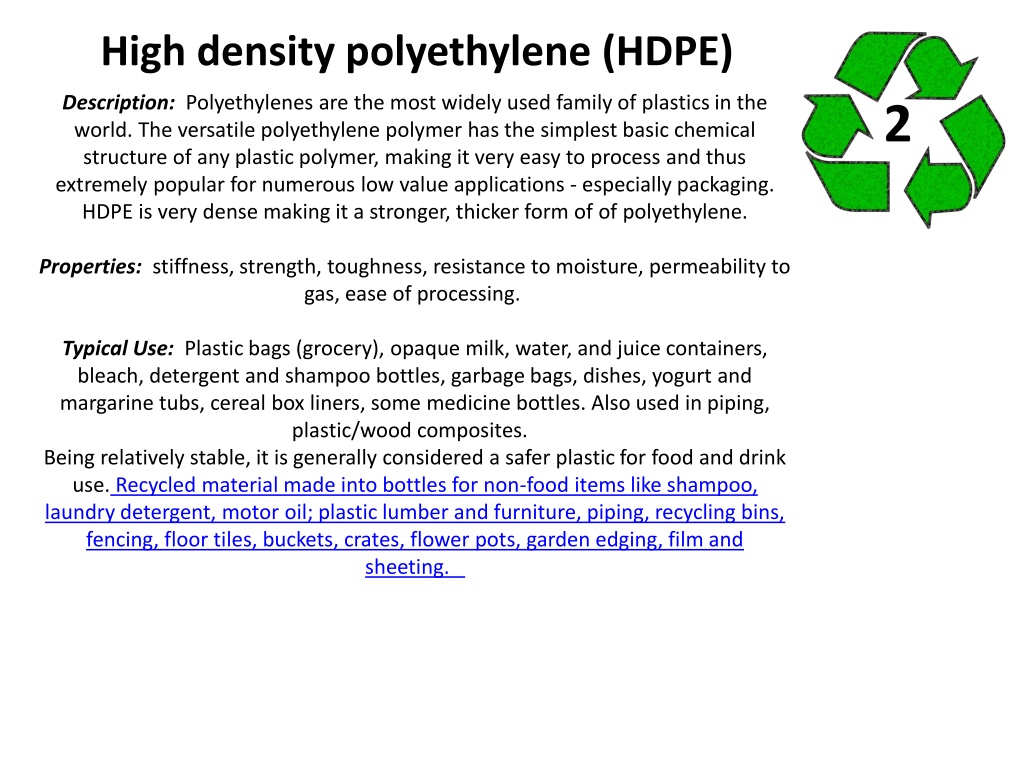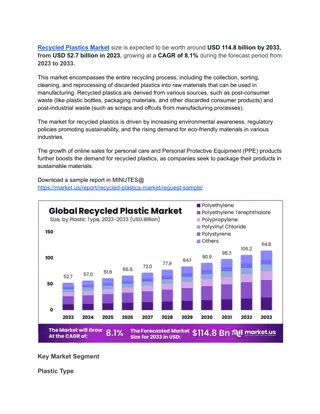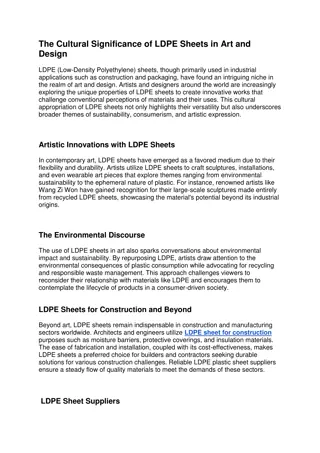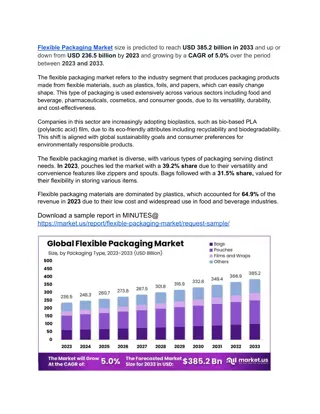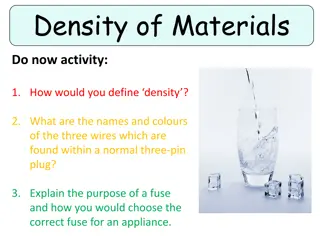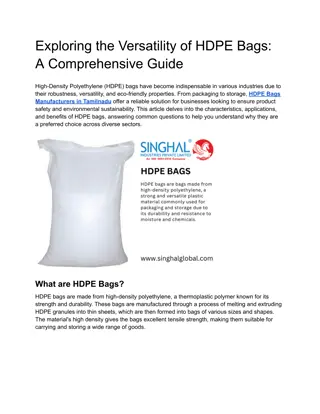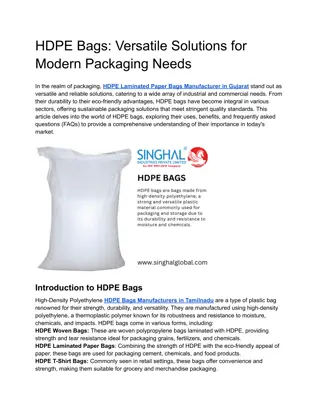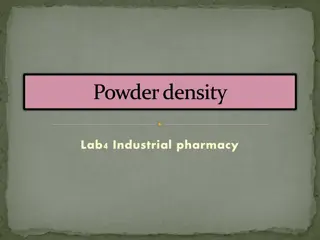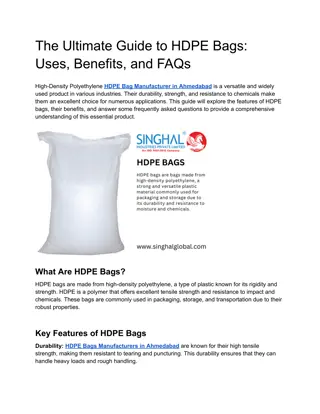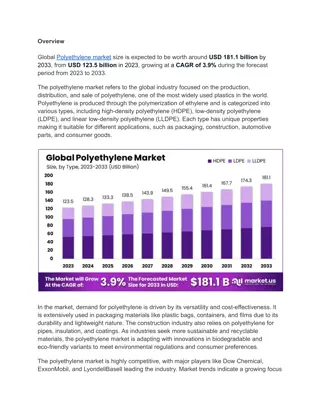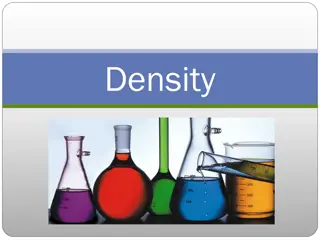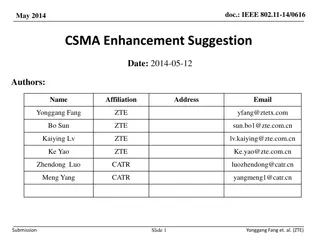Overview of High-Density Polyethylene (HDPE) and Low-Density Polyethylene (LDPE)
High-density polyethylene (HDPE) and low-density polyethylene (LDPE) are versatile plastics widely used for packaging and other applications. HDPE is known for its stiffness, strength, and resistance to moisture, while LDPE offers flexibility and ease of sealing. Polypropylene (PP) is another popular plastic with applications in food containers and various products due to its stiffer nature and heat resistance.
Uploaded on Sep 13, 2024 | 0 Views
Download Presentation

Please find below an Image/Link to download the presentation.
The content on the website is provided AS IS for your information and personal use only. It may not be sold, licensed, or shared on other websites without obtaining consent from the author. Download presentation by click this link. If you encounter any issues during the download, it is possible that the publisher has removed the file from their server.
E N D
Presentation Transcript
High density polyethylene (HDPE) Description: Polyethylenes are the most widely used family of plastics in the world. The versatile polyethylene polymer has the simplest basic chemical structure of any plastic polymer, making it very easy to process and thus extremely popular for numerous low value applications - especially packaging. HDPE is very dense making it a stronger, thicker form of of polyethylene. 2 Properties: stiffness, strength, toughness, resistance to moisture, permeability to gas, ease of processing. Typical Use: Plastic bags (grocery), opaque milk, water, and juice containers, bleach, detergent and shampoo bottles, garbage bags, dishes, yogurt and margarine tubs, cereal box liners, some medicine bottles. Also used in piping, plastic/wood composites. Being relatively stable, it is generally considered a safer plastic for food and drink use. Recycled material made into bottles for non-food items like shampoo, laundry detergent, motor oil; plastic lumber and furniture, piping, recycling bins, fencing, floor tiles, buckets, crates, flower pots, garden edging, film and sheeting.
Low density polyethylene (LDPE) 4 Description: Polyethylenes are the most widely used family of plastics in the world. The versatile polyethylene polymer has the simplest basic chemical structure of any plastic polymer, making it very easy to process and thus extremely popular for numerous low value applications - especially packaging. LDPE polymers are less dense and thus a generally thinner more flexible form of of polyethylene. Properties: strength, toughness, flexibility, resistance to moisture, ease of sealing, ease of processing. Typical Use: Mostly for film applications like bags (grocery, dry cleaning, bread, frozen food bags, newspapers, garbage), plastic wraps; coatings for paper milk cartons and hot & cold beverage cups; some squeezable bottles (honey, mustard), food storage containers, container lids. Also used for wire and cable covering. Being relatively stable, it is generally considered a safer plastic for food and drink use. More difficult to recycle. Recycled material can be made into compost bins, paneling, plastic lumber.
Polypropylene (PP) 5 Description: Polypropylene is used for similar applications as polyethylenes, but is generally stiffer and more heat resistant - so is often used for containers filled with hot food. It too has a simple chemical structure making it very versatile. It s structural order affecting hardness is quite high, somewhere between LDPE and HDPE. Properties: strength, toughness, resistance to heat, chemicals, grease & oil, barrier to moisture. Typical Use: Food containers (ketchup, yogurt, cottage cheese, margarine, syrup, take-out), medicine containers, straws, bottle caps, Britta filters, Rubbermaid and other opaque plastic containers, including baby bottles. Other uses include disposable diaper and sanitary pad liners, thermal vests, appliance parts and numerous car parts (bumpers, carpets, fixtures). Being relatively stable, it is generally considered a safer plastic for food and drink use. Recycled material made into brooms, brushes, bins pallets, auto battery cases, flower pots.
